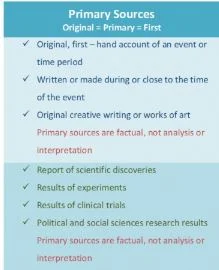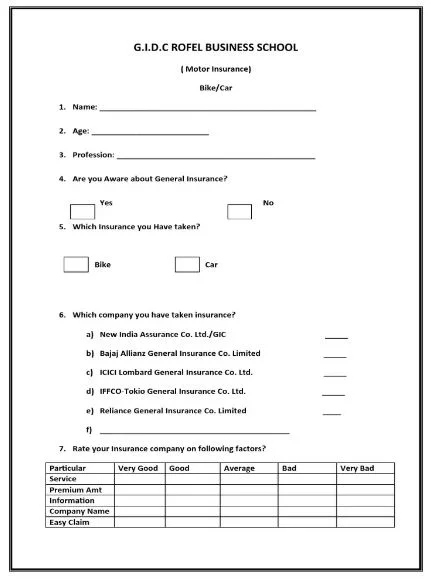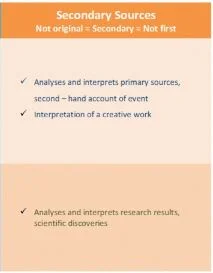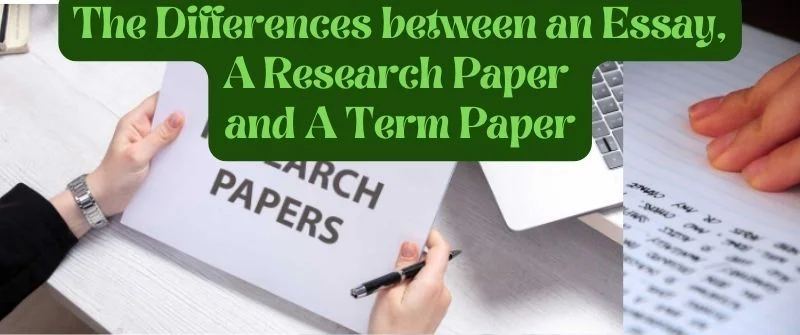Is a Person a Primary or Secondary Source of Research?

For a source to be considered primary, it must be an immediate and first-hand account of information. Primary sources include direct information or evidence that contains the original information of a topic or event.
The sources have not been modified through ways such as interpretation and offer the original view of thoughts and information. Primary sources can be transformed from their original form to a new one.
The information remains original but the source becomes secondary.
People Also Read: Is an essay formal or informal: characteristics of each
Is a Person a Primary Source?

A person can be a primary source when the information they provide includes direct and original knowledge of a topic, subject, or situation. For example, when a person is giving a personal speech, he is a primary source.
Also, a person is a primary source when he or she is being interviewed and providing information about himself. The information given is timely, and there is no worrying about its age.
To add to that, when journalists are on-site reporting, the information they provide is firsthand, making them the primary sources of that information.
When a person is considered the source of original information, then he or she automatically becomes a primary source of information.
People Also Read: How to Censor Words in an Essay: Bad Words in Academic Papers
How to Get Primary Data from a Person
1. Observation
Observation is the process of closely monitoring someone. Once you monitor them you can record their behavior or actions as seen directly. There are two types of observations:
Direct Observation
In direct observation, people know that you are monitoring them. This is usually risky because they may react to you other than carry on with their normal behaviors.
This can force a long-term process to provide time for people to get used to getting observed and hence reveal their true selves. Direct observation can either be continuous or timely.
Continuous observation involves watching people and recording their behavior as much as possible while timely observation involves setting a specific time of recording people for the first time before they notice you.
Unobtrusive observation
This involves observing people when they do not know that they are being observed. Here there are no concerns that the subjects being observed will change their behavior.
2. Interviews

Interviews can help get information from people through two or more people exchanging questions and answers.
The interviewer sets the questions targeting specific topics that they want information about.
Interviews can be done through in-person meetings with two or more people but with technological advancements, face-to-face meetings are no longer necessary.
Interviews are a brilliant way to collect detailed information from people.
The interviewers should set interviews in a way that they will be able to extract the information they need the most from the interviewees. This calls for proper prior preparation.
Topics that require lengthy explanations can be tackled exhaustively through interviews.
3. Questionnaire
A questionnaire is a list of questions that are printed or typed which people respond to by providing specific information. The questions are either restricted or unrestricted.
Restricted questions are closed-ended and require a person to make choices. Unrestricted questions allow persons to give opinions and feelings that matter to them.
The depth of emotion in the respondents is brought out by unrestricted questions. In this method, respondents are allowed enough time to formulate the answers.

Also, questionnaires allow for uniformity of responses because respondents will answer the same questions.
4. Practical
Practicals can be used to collect information from people. A practical involves something that has already been studied and is now being tested.
This means that practicals involve specific information, a particular number of people, and a specific method of gathering the information.
For example, one can be sent to a specific clan to observe their ways of life and prove whether the theories that are written about them are true or false.
5. Trials
Trials are conducted on people to find out more about a new topic that may be causing or will cause controversial opinions among the population.
That topic is like a discovery that is tried on people to gauge its effectiveness through responses. For example, the government may have enacted new laws that are explained to the people and they wait for the public opinion from people to determine whether to proceed and make them official laws.
The public opinion vote delivers the message to the government on whether the people favor the new rules or not.
6. Experiments
Collecting information from people through experiments aims at controlling a lot of factors and isolating some for effective results.
The experiments must be effectively conducted if the right results are to be produced. For example, when people who live in deserts are taken to highlands, they will experience some changes due to environmental change. Similarly, people living in the highlands will experience changes if taken to arid areas.
The best analogy to explain the experiment method on people is using one type of fertilizer on a set plot of corn and another different type of fertilizer on a different type of corn. The results for each will be very different
Instances When a Person Becomes a Secondary Source
People become secondary sources when they do not experience the information they are reporting firsthand.
For example, when a news reporter is reading the stories and events of the day he or she becomes a secondary source.

Also, when someone reads another’s speech in absentia during a function then he or she becomes the secondary source.
Additionally, people who write reviews on different products become secondary sources of information.
Furthermore, all writers of journal articles, reports, newspapers, magazines, handbooks, and dictionaries are secondary sources of information. Also, all actors are secondary sources of information because they enact scenes that are originally scripted.
People Also Read: Can Literature Reviews Be Published: Can I Publish on My Own
Is a Quote from a Person a Primary or Secondary Source?
A quote can be a primary or a secondary source.
When it is about general knowledge and involves the original thoughts of a person then he or she is regarded as the primary source of that information.
However, quotes become secondary sources if they are processed using information from sources. For example, quotes from the world war that are found in books come from different sources. Therefore, the author of the book is a secondary source.

With over 10 years in academia and academic assistance, Alicia Smart is the epitome of excellence in the writing industry. She is our chief editor and in charge of the writing department at Grade Bees.




